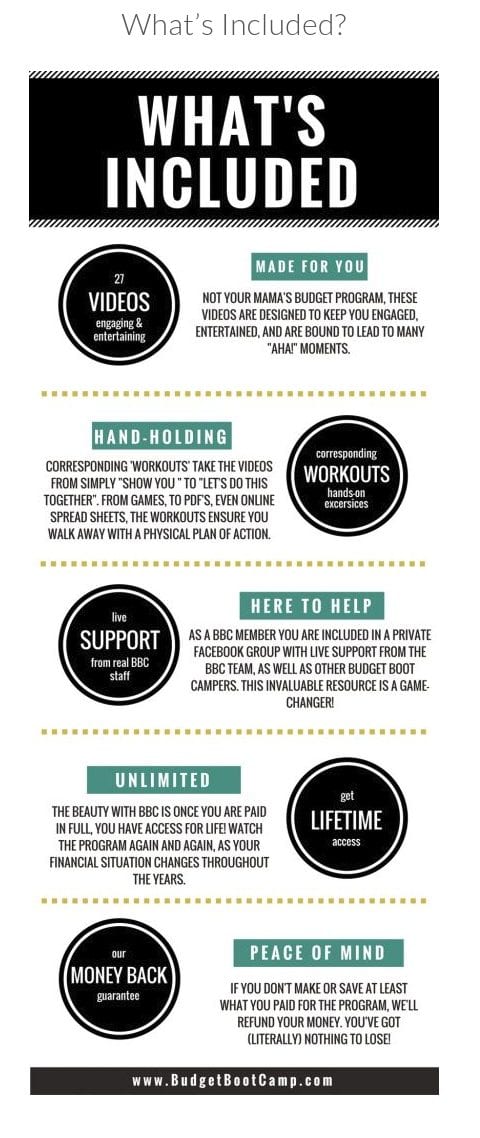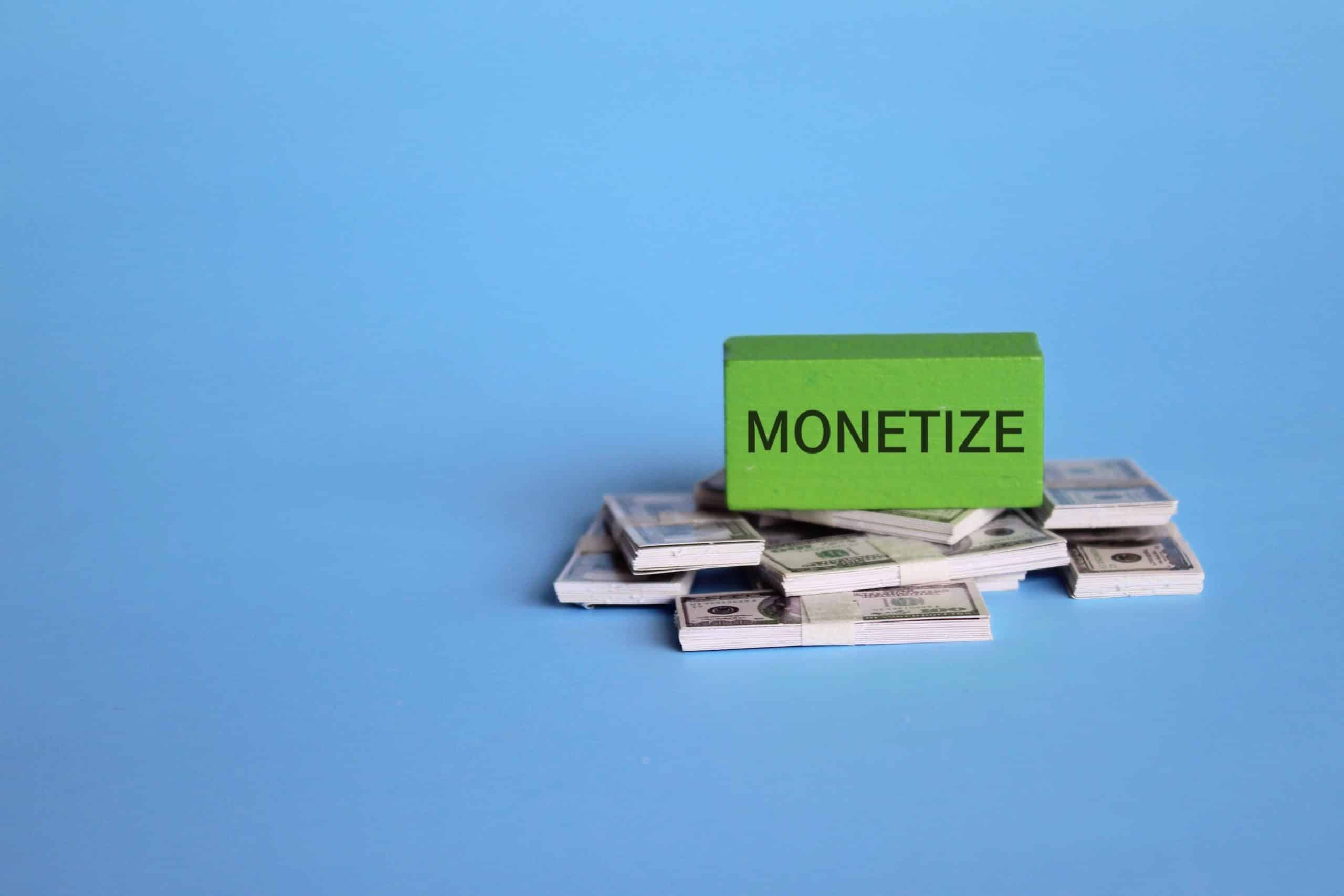Digital content offers consumers solutions for everything from burning fat faster to making money online. Courses, white papers, eBooks, webinars, and subscription-based communities all provide ways for experts to share their knowledge with others while building credibility in the field. And, if you learn how to monetize exclusive content, it can generate an additional revenue stream.
As a reference, the global e-learning market alone is expected to hit $336.9 billion by 2026, with a 9.1% compounded annual growth rate projected between 2018 and 2026, according to statistics from Research.com.
What Is Content Monetization?
Content monetization refers to the revenue-earning process of charging a fee for access to exclusive materials. The content might be an article, an exclusive course, an eBook, or a monthly newsletter subscription. It also encompasses exclusive content shared with subscribers of Patreon, Substack, or Medium accounts. Virtually every publisher and brand can benefit from monetizing content as part of a comprehensive digital marketing strategy.
Digital content is appealing to users in virtually every field because it promises an instant ticket to exclusive information that isn’t shared anywhere else. This sense of exclusivity creates FOMO (fear of missing out), which makes a $9/month subscription or $147 online program hard to resist.
Who Should Monetize Their Content?
Content monetization can benefit online publishers, brands, small businesses, service providers, influencers, and anyone with unique knowledge to share. In addition to generating extra revenue, offering exclusive content can also promote your brand and other products.
If you’re a publisher, for example, you might provide gated content that’s only available to monthly subscribers. Or if you have a graphic design business, you could sell eBooks or courses as an additional revenue stream.
Platforms like Medium, Patreon, and Substack give creators and industry experts opportunities to share their content and provide value-added content for a fee.
Benefits of Monetizing Your Content
Content monetization can generate thousands of dollars with just a few hours worth of work. In addition to the obvious benefit of bringing in money, monetizing content has other benefits for marketers and publishers.
Creating a course or e-book can also help create name or brand recognition for yourself or your company. Having a bestselling Amazon eBook can lead to podcast interviews, video interviews, or being quoted as an expert source on top-tier websites. Putting the word “author” after your main title adds credibility to your expertise.
Also, monetized content can also help with lead generation. If someone buys your book or course through your website (rather than a third-party site) or opts to receive your newsletter, they have to provide their email address. That means you can market additional services through an email campaign. You can also request a phone number for SMS marketing.
This marketing tactic can work for service providers of all kinds. For instance, if a CPA writes an ebook about how small businesses can save money on taxes, they are building trust with their audience. Business owners will be more likely to reach out to that CPA for tax preparation or ongoing bookkeeping services.
Downsides of Monetizing Your Content
Monetizing content is a relatively easy tactic with very few downsides; however, one drawback is that you’ll need to find a way to market your content for repeat sales. There is so much content available today, that people feel overwhelmed. You need to create a useful, in-demand product and then market it in the right ways so it stands out.
You may also need to hire outside experts to format or develop your content, which can mean an additional investment beyond your time. For instance, if you’re writing an eBook, you may want to hire a graphic designer to create a cover. If you’re a finance professional, you might want to hire a content writer or an editor to review your eBook before publication. If you have an idea for an app, you may need to hire a developer to create it.
One of the other downsides is that you are keeping a portion of your potential audience from seeing your content, if they aren’t willing to or can’t afford to pay for it. This can limit your market, so it’s important to continue creating helpful free content, as well.
Content Monetization Models
Not all content monetization models require charging consumers to use or view your content, although many do. You may opt to employ a variety of content monetization models to generate multiple revenue streams.
Subscriptions
Subscriptions to websites, newsletters, or online communities can generate recurring revenue while helping content creators build relationships with their audience.
Gated Content
Gated content often includes white papers, eBooks, webinars, or courses that involve a one-time fee. By putting your content behind a paywall, you gain the added benefit of collecting an email address from your buyer.
Affiliate Marketing
Unlike gated content or subscriptions, affiliate marketing does not rely on selling your own content. As long as your audience is large enough, you can establish affiliate programs with top brands related to your niche.
When audiences click on your affiliate link to make a purchase on a third-party site, you’ll earn a percentage of the revenue. Affiliate links don’t cost your audience money, other than the price of the product they are purchasing. Your payment comes from the brand, who is rewarding you for helping increase their sales.
Paid Advertising or Sponsored Posts
There’s another way to earn money from your content that doesn’t cost your audience a penny: paid advertising and sponsored posts. If your audience is large enough and highly engaged, brands will pay you to place ads or sponsored posts on your website or social media platforms.
You can also choose to place ads on your website through a third-party ad network. If you’re publishing YouTube videos, you can place ads in your videos to generate revenue, as long as you meet the minimum viewership requirements.
Some types of advertising include:
- Display ads.
- Native ads.
- Video ads.
- Sponsored posts.
How to Monetize Your Content: 5 Best Strategies
You can monetize different types of content. When publishing exclusive content, think about how your users like to consume content and create it for that platform and audience specifically. Here are some of the most popular strategies.
Publish Ebooks or Online Programs
Content creators can bundle exclusive content into an online course, complete guide, or online program.
For instance, blogger and money expert Jordan Page created a “Budget Bootcamp” that costs $149 and contains 27 videos, 16 budgeting exercises, and a private Facebook group for students.
Because customers can’t flip through a digital product like they would a regular book, many high-converting sales landing pages for this type of content have the following features to showcase features:
- Testimonials from users who have read the book or taken the course.
- Sample worksheets or videos from the actual course.
- Statistics on how the information has changed customers’ lives (e.g. “60% of our customers now report they are debt free from our program”).
Many online programs offer a ton of content so the price point seems like a better deal. In Page’s case, 27 exclusive videos for a “Budget Bootcamp” is a lot more enticing than five free videos.
Consider offering a money-back guarantee in case the customer isn’t happy. This reduces the risk for potential customers and demonstrates that you have faith in your product. .

Create an App
Private apps have become big business for celebrities, influencers, and brands. One of the biggest success stories for an exclusive content app is Kayla Itsines’ fitness app Sweat. Since its launch in 2015, the app has been downloaded by millions of women and garnered a rating of 4.6 in The App Store. Subscribers pay $20 a month (or $120/year all at once) to use the app, which has new and old workouts from Itsines and other trainers.
The app offers a 7-day free trial so users can decide if the tailored fitness programs offered are right for them. The app requires a credit card to get started. If you don’t cancel your trial at least 24 hours before the trial period ends, it will roll over to a monthly subscription.
Since 42% of consumers admit they forget to cancel a subscription service, according to C&R Research, requiring a credit card during the free trial can help put extra cash in your pocket from subscriptions. However, as consumers grow more savvy, many people won’t download a free trial if the trial requires credit card information.
Ideally, your app will provide so much value during the trial period that your customers will want to continue paying for it, and not just forget about the app until they review their credit card statement.
Require Subscriptions
In addition to apps, you can also monetize newsletters, blogs, access to online communities, and video content through subscriptions. . Subscriptions offer the benefit of steady, recurring revenue, but you’ll need to continue providing value on a regular basis to hold onto your subscribers.
Unlike selling a course or an eBook, you can’t just create content once and sit back and collect money from subscribers. However, the benefit to a subscription platform is that once you’ve created a healthy subscriber base, you can dial back on marketing for a short time and still generate revenue as long as you continue delivering quality content.
Put Existing Content Behind a Paywall
You don’t have to create a lengthy course, write an eBook, or create an app to monetize your content. Many news publishers choose to put individual articles behind a paywall.
The New York Times, for example, lets readers view three free articles per month, then charges $1 to $3 per month for unlimited access to their articles. The Times reported that online subscribers count for almost 2/3 of their total revenue and the newspaper has actually managed to turn a profit in an era where newspapers are falling in circulation.
This model is great for publishers that have lots of new pieces of content daily and possibly aren’t making enough revenue from advertising or sponsorships. Asking readers to subscribe or pay for content — especially a few dollars here or there — is becoming more common, and as a result, users may be less likely to reject it.
You may also consider monetizing older content, access to proprietary tools like industry calculators or private tutorial videos, or bundling all existing exclusive content into a single membership fee.
Utilize Affiliate Marketing
You can also use affiliate marketing within videos, blog posts, or other written content to earn money on any products or services you mention. If a viewer clicks on promoted products from one of your posts, you’ll receive a percentage of the sale or a predetermined amount of money from the vendor.
What Not to do When Monetizing Content
According to the World Economic Forum, people place more trust in content and information they pay for. Consumers may also believe their data is safer if they pay for content. After all, as the saying goes, “If the product is free, you are the product.”
But that doesn’t mean everyone is willing to pay for everything they read, view, or engage with online. You must prove the value to your audience. Here are some common mistakes when online content creators aim to monetize their offerings.
Not Delivering Enough Value
With so much information available online and through our phones, it’s overwhelming to choose the right content, especially when audience members must choose to pay for that content. Make sure your gated content or subscriber-only content delivers value above and beyond the content you offer for free.
Not Showing the Value of Your Content
You might know that your online course or eBook can help change people’s lives; but are you proving that to your target audience? Use testimonials from satisfied customers, case studies that share success stories, or share previews of your content with your audience to show them the value, and show them what they could be missing, if they don’t opt in for your paid content.
For instance, the Sweat app became a bestseller, in part, because people saw the results of Itsines’ Bikini Body Guide Workout program, which is in the app.
Choosing the Wrong Platform or Format for Your Audience
Itsines’ app also achieved massive success because she was very clear on her target market, women ages 25 to 35, and understood the best way to reach them. Most users in that age range heavily use apps daily. This makes her content more accessible and easier to use for many users than if she had published it as a DVD or a YouTube series.
To boost your chances of success, get clear on your audience persona, who you are trying to reach, and know where they hang out online.
Final Thoughts
Monetizing content can help prove your value to your audience while generating revenue for your brand. More than one-third of consumers (31%) believe that educational content is worth paying for, according to data reported by Statista.com.
Only 30% believe that no website content is worth paying for. According to Statista, 11% of adults in the U.S. and U.K. are willing to pay for news, while 17% will pay for lifestyle content covering topics like food, fashion, and cooking. But providing the right type of content to your audience and clearly demonstrating the value of that content is the key to successful campaigns.
Frequently Asked Questions (FAQs)
What kind of content can I monetize?
You can monetize virtually any type of online content, including articles, white papers, courses, eBooks, videos, and apps.
Where can I monetize content?
Marketers can monetize content on a variety of platforms, including social media platforms like Instagram, TikTok, or YouTube, websites and blogs, subscription sites like Substack or Medium, and within apps.
How do I start making money with content?
To begin earning income as a content creator, you’ll need to choose your niche, find your audience online, create content that will resonate with your target audience, and then decide how you want to monetize it. You can monetize content through paid ads, affiliate marketing, subscriptions, gated content, and other tactics.



